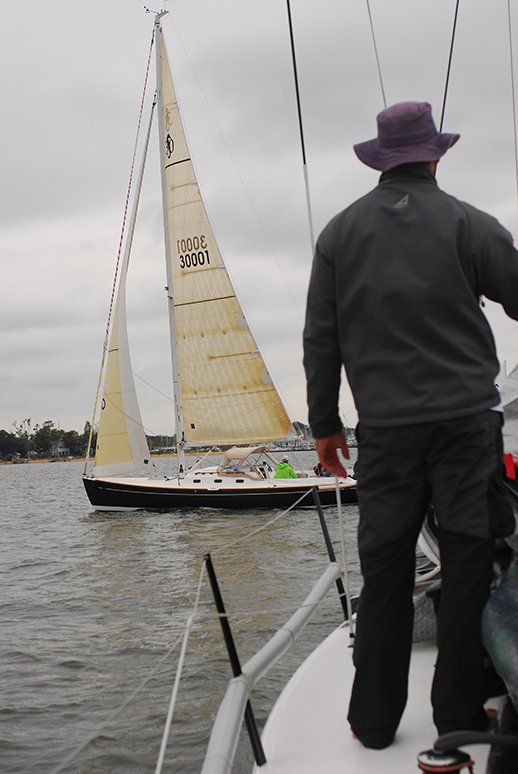Whether you view it from the top down or the bottom up, a Solent rig needs to be carefully thought out, well-engineered, and strategically located. Some sailors add a short bowsprit or U-shaped, tubular extension that includes a bobstay and supports the attachment of a new headstay. The old headstay chainplate becomes the new tack point for the Solent stay. Another approach is to retain the existing headstay and simply attach a new tang just a bit below the headstay sheave box. Then add a deck fitting to attach the Solent stay and tack the sail(s). The deck must be reinforced with a transverse member or tie rod mechanically fastened to the stem so that the tension loads don’t damage the deck.
Either approach can be a win-win solution, but as with all sailboat modifications, the devil is in the details. On the up side, both options offer a double-headsail rig that doesn’t require the addition of running backstays. But when the sprit option is chosen, rig support can be jeopardized due to the placement of the headstay outboard of the stem of the vessel. On a traditional cutter, the same thing occurs, but the original stem-mounted headstay simply becomes the forestay, and the loads are shared. With a removable Solent stay disconnected, this belt-and-suspenders security is lost.
Make sure that the load-bearing capacity of the sprit and its attachment points have been carefully calculated. This structure must account for more than tension in the headstay(s). It includes designing the structure to counteract forces such as those exerted by one or two anchors pounding into short, steep seas on a squally afternoon sail home. Little things can play a major role down the road, like properly sizing bobstay terminals and fittings to account for degradation caused by intermittent or continuous immersion in seawater. Many modern designers prefer to add a little more ballast and a little more height to the mast rather than put the headstay outboard on a 21st-century bowsprit. However, plumb-bowed boats have complicated anchor handling and made short sprits almost a necessity.
In the case of boats with high sail area-displacement ratios, you may want to put a light-air genoa or a drifter/reacher on the headstay and set up another roller-furler with a non-overlapping sail on the Solent stay. The trick is knowing when to switch gears from the lightweight sail on the headstay and unwind or hank on the small jib that sets on the Solent stay. In either case, when the stay becomes a permanent fixture, the rig is better supported, but each tack or jibe of the larger headsail requires rolling it and unrolling it.



































